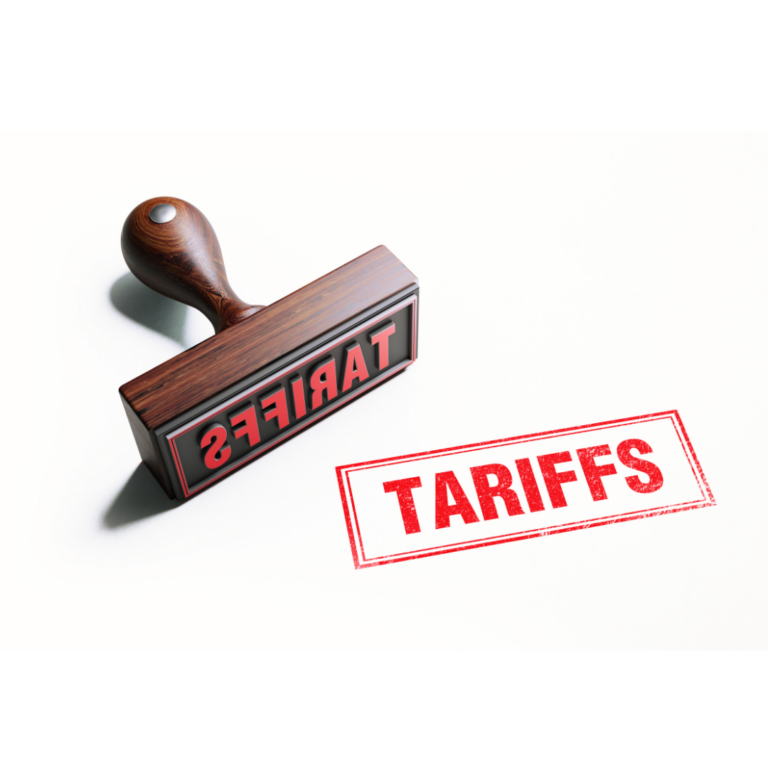Ten Things I Think I Think

Japan is back… Where were you in 1989? It is a welcome sight witnessing the Japanese stock market get back to levels it last touched when I was wearing tube socks and playing Nintendo. In the first quarter the TOPIX was up 10.05% matching the S&P 500 torrid start to the year. But it’s not just in the capital markets that are buzzing. You could stay up late watching Bloomberg Asia during market hours but since that should be time to wind down, you won’t be disappointed taking in two of the best series on television right now… Max’s Tokyo Vice and Shogun on FX. The world’s third largest economy as measured by GDP deserves some love. Between pop culture and higher stock prices it’s a new dawn in The Land of the Rising Sun.We are in the midst of March Madness, the pinnacle of excitement in “amateur sports” it’s hard to replicate something so immersive and exciting, but I worry the combination of the NIL and sports betting has irreparably damaged the purity of the tournament. We are all aware by now that the pandemic ushered in new era of gamification and gambling providing a much-needed distraction and some excitement in those dark days of lockdowns and masks. When it comes to wagering it’s common knowledge the house always wins. All you need to do is look at the gambling stocks which have been on a tear as they quietly pick your pockets. I have my thoughts about legalizing drugs and making gambling more accessible, but rather than pontificate, I have a more compelling suggestion. On any given day, the stock market chances for an increase is no greater than a coin toss. Alas if you buy a stock or fund you get to play that same wager over 240 times a year and rather than the “house” ending up ahead in the long run you likely have a lot more to show for it.The death of Nobel prizing winning psychologist Danny Kahneman last month had me reflecting on a true intellectual giant’s contributions to the world of behavioral finance and its value to the everyday investor. Even for someone who has spent more than two decades honing my craft, I am often surprised/amused at the tricks our minds play on us when it comes to investing. Dr. Kahneman’s seminal work Thinking, Fast & Slow is a true masterpiece, but many struggle to make their way through it. Michael Lewis’s 2016 Undoing Project is a wonderful tribute to Danny and his best friend Amos Tversky, and is a really approachable read for those unwilling to commit to the intellectual density of T, F & S. Any investor would be well served to learn about loss aversion recency bias or the endowment effect to name just a few of those blasted biases.
Just when you thought people were coming to their senses and the crypto bust of 2021-2022 rid us of the daily digital data dump, here we are again with the biggest grift in modern times. I have to give it to them, despite lacking a compelling use case the Bitcoin believers have talked their way into one of the most epic executions of the greater fool theory in the history of man. Happy to have Wall Street get in on the rouse, the SEC and the sponsors of the various Bitcoin ETFs should be ashamed of themselves. Making it easier for people to lose their hard earned money is not why we are in this business and anything to “legitimize” an endeavor that has funded terrorism, human trafficking and the drug trade all for some basis points is an embarrassment.
While we are on the topic of dereliction of duty, has anyone spoken with a family trying to navigate the FAFSA process this year? It’s bad enough that it costs $90,000 for a year at a prestigious liberal arts college, but to think we are making it more difficult to apply for and receive aid. You wonder why the younger generations are fed up and both sentiment levels and the government’s approval rating is at historically low levels despite a stock market at all-time highs and an unemployment rate under 4%. Applications for aid are down 57%, you read that right while the costs of college skyrocket. And those that applied were working with incomplete data. I can’t make this stuff up. We are supposed to be taking care of those in need, but we are more likely to see students take on more debt. If there was ever a better reason to start plowing money into the 529 plans now then let me know. It’s not to say we shouldn’t take the aid available to us, but perhaps it’s best to be in a position where we don’t need to count on it.
George Carlin may have been thinking about another dirty word when he heard someone mutter the word inflation. It’s surely making the current administration cringe with the election less than 7 months away. While the rate of price changes have dropped markedly from their peaks in the summer of 2022, recent data suggests the victory lap for Fed which kicked off in October coinciding with this strong rally, may have been a bit premature. Coming into the year the market was pricing in 6 or even 7 rate cuts but a combination of better labor data and price stickiness has reduced the probability of aggressive easing getting under way. Just this week, on Monday, the ISM Manufacturing Survey showed we entered expansion territory in March for the first time since the Fall of 2022 and now the odds suggest just two cuts may be in the cards for 2024. It’s becoming increasingly more evident that we are in a period of fiscal dominance, I am not sure that monetary policy is having as much of an effect outside of residential and commercial real estate. The former is holding up fine in the face of limited inventories while the latter is holding on for dear life; they stare down the barrel of a gun in the form of refinancing.
Always good to zoom out a little. I am not sure we will see those prices come down without a deep recession, but before we do too much hand wringing it’s important to put things into the proper perspective. For the last 30 years, dating back to 1994, CPI has average just below 2.50% including the recent the elevated inflation, that’s less than half the inflation for the 30 years from 1966 through 1995 where prices grew at a clip of over 5.4%.
Magnificent 7, 6, 5 4, 3 , 2, 1… Aside from Meta and Nvidia the latter of which has somehow managed to add an 80% return on top of a truly breathtaking 2023 performance, we have seen quite the dispersion in the returns and what appears to be a case of returning from orbit for high flying Apple and Tesla. With the group trading at a forward P/E ratio of 31 times there is no room for error as they trade at 50% premium to the S&P itself over which they have a great influence given their size. What is even more amazing is that they trade at a 100% premium to the equal weight index. Something has to give, is it that Amazon, Microsoft, Meta and Alphabet starts to resent buying GPUs from Nvidia with 80% gross margins and they start in house fabrication much like Apple did with ditching Intel in 2020. Rent seeking behavior is usually short lived as competitors look to take share as well. Or perhaps it’s all that enterprise spending that doesn’t yield the earnings growth forcing multiples to contract. Much like the upcoming NFL draft there rarely is a can’t miss story out there. Much like “retired” Bill Belichick did at the helm of the New England Patriots for 20+ years, perhaps trading down and having more picks allows you to build a better roster versus needing everything to go right with your one great idea. Diversification and identifying mispricing is a consistent path to wealth even if it takes you a little longer to get there.
Common prosperity or conciliatory China? Polishing off the old playbook and rebranding communism by using some more gentle words like common and prosperity doesn’t mean your people have to like it. History suggests that there is nothing common about prosperity when the state dictates distribution of resources as was the case for the 30 years under Chairman Mao until Deng Xiaoping ushered in market based reforms in the late 1970s and early 1980s. Clearly Xi Jinping’s admiration of Mao Zedong’s emphasizes his cult of personability and despotic tendencies while minimizing the fact his policies resulted in the deaths of millions of Chinese whether by famine or the Cultural Revolution. But the Chinese have had their taste of capitalism it appears they like what they experienced. While the property problem persists, efforts to cool tensions between the US and Chinese relations along with more aggressive and targeted stimulus may break the years’ long malaise. The last pre-pandemic slowdown in China required about 2 years to run its course and then set up a period of synchronized global growth from 2016-2019 a similar recovery would be welcome as trade may provide further disinflationary pressures as they compete with Mexico and India for labor and any increase in consumption is bound to help US multinationals grow earnings after the US consumer eventually slows down. We are not ready to pivot away from our view China is practically un- investible but this is modestly constructive and worth monitoring.
Virtuous cycles of asset allocation based investing. Whether the calendar dictates adjusting your investment mix or there is more discipline based on drift and data, the fact we have spent 30 of the last 40 years in one heck of a bull market has meant that there has been an unquenchable demand for fixed income. At one point the bond market in the US dwarfed the stock market but stocks have caught up where both pools of capital valued at about $51TT. Globally the bond market is a bit bigger than the equity markets, $133TT to $110TT. Rates have been coming down since the early 1980s only to have increased a bit in the middle of the 2000s and again most recently. Higher rates should attract more buyers, yet $6TT is parked in money market funds. The average bond buyer has become much more price (yield) insensitive, buying bonds in something resembling rote behavior. If the market continues to go up and likely at a rate of change that exceeds the bond market, and it should given the uncertainty associated with owning stocks and the natural inflationary forces that drive asset prices higher, then we should more often than not have a bid putting something of a lid on yields and not needing to implement a Japan style yield curve control. Mark Twain’s famous quip about his death being an exaggeration seems fitting for all those folks.
Please join us April 18th for our Quarterly Market Review and Outlook.
Sources: Baron’s WSJ, BLS, ISMForbes, JP Morgan Asset Management
Additional information, including management fees and expenses, is provided on our Form ADV Part 2 available upon request or at the SEC’s Investment Adviser Public Disclosure website, www.adviserinfo.sec.gov. Past performance is not a guarantee of future results.

Breakwater Team
At Breakwater Capital, we work with families across the United States, providing each client with a personalized experience tailored to their current circumstances, future goals, and timelines.











